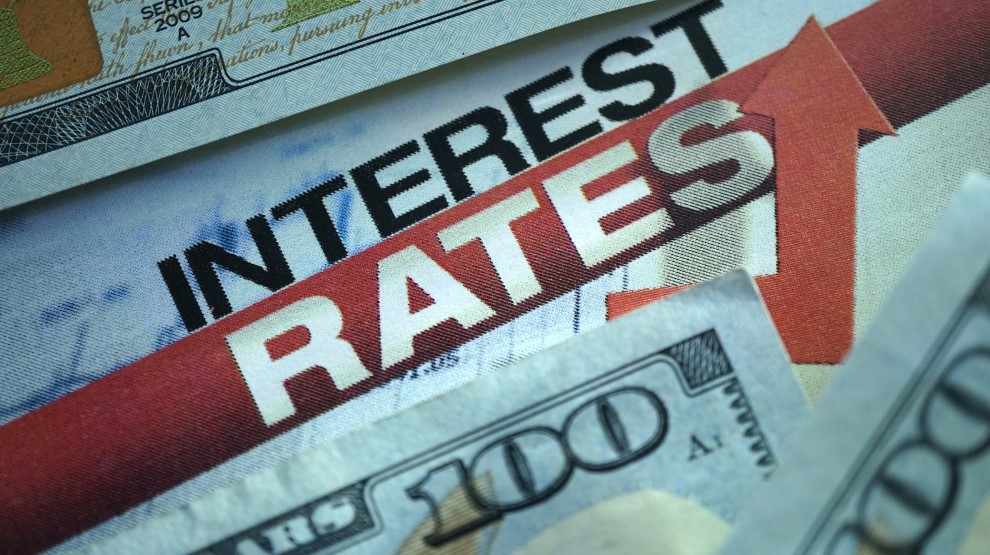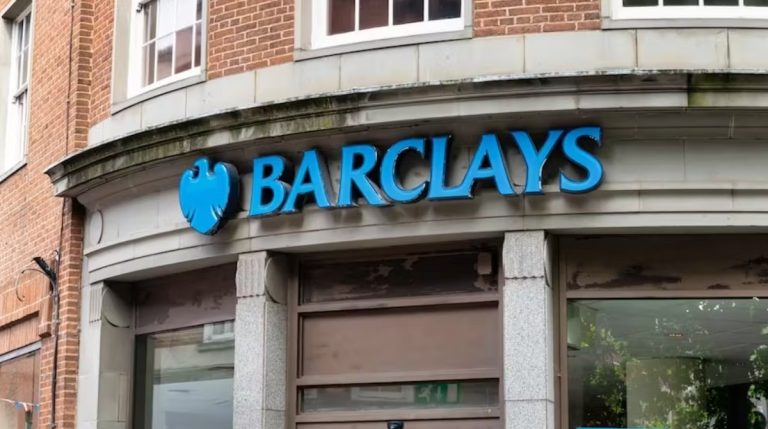Why are the Bank of England’s interest rate decisions so impactful, and what does it mean for individuals and the economy as a whole when these rates change?
As the UK’s central bank, the Bank of England wields substantial influence over the economy, using the base rate to shape inflation, guide spending, and support economic growth.
But while we often hear about interest rates rising or falling, understanding how and why these decisions are made can be complex.
In this article, we’ll explore what drives these rate changes, how they influence everyday finances, and what to expect in the near future from the Bank of England’s policies.
An Overview of the Bank of England Base Rate

The Bank of England base rate, also known as the bank rate, is the primary interest rate the Bank of England charges commercial banks. Serving as the UK’s benchmark for lending and borrowing, changes to this rate directly affect banks’ rates on mortgages, savings accounts, and loans across the country.
This rate is a vital tool for economic stability. By adjusting it, the Bank of England can influence inflation, stabilise prices, and manage spending and investment based on current economic conditions.
When the base rate is high, banks face increased borrowing costs, which they pass on to consumers through higher interest rates on loans and mortgages. This discourages spending and can help reduce inflation. Conversely, a low base rate lowers borrowing costs, encouraging more spending and investment to stimulate a sluggish economy.
For the average UK consumer, shifts in the base rate impact everything from monthly mortgage payments to the returns on savings accounts. Therefore, it plays a crucial role in both personal finances and the broader economy.
How Much is the Current Bank of England Interest Rate?
The Bank of England has cut interest rates for the second time this year, lowering the base rate from 5% to 4.75% as of 7th November 2024, a 0.25 percentage-point decrease following an August cut. These mark the first reductions in four years.
Governor Andrew Bailey hinted that rates may “continue to fall gradually” but warned against lowering them “too quickly or by too much.”
Despite the cuts, mortgage rates are on the rise, impacting homeowners. Lenders like Virgin Money, Halifax, and Coventry Building Society have raised fixed mortgage rates by up to 0.25 percentage points.
Moneyfacts reports that the average two-year fixed rates have climbed from 5.39% to 5.42%, and the five-year rates have climbed from 5.09% to 5.13%. Advisors suggest that borrowers fix rates soon, as the lowest rates haven’t yet changed.
Savings rates have seen modest increases in fixed-rate bonds due to rising swap rates ahead of the Budget. Although tracker mortgage payments are set to drop by an average of £28.98 monthly, the contrasting trends in mortgage rates amid a base rate cut underscore the financial market’s complexity.
Why Does the Bank of England Adjust Interest Rates?

The Bank of England adjusts the base rate to respond to inflation, economic growth, and other financial conditions. Adjustments aim to support economic stability and ensure that inflation stays within the Bank’s target range.
Controlling Inflation
Inflation occurs when prices increase, diminishing the purchasing power of money. The Bank of England typically aims to keep inflation at around 2% annually.
If inflation rises above this target, the Bank may raise the base rate to cool down spending and slow inflation.
Encouraging Economic Growth
During economic downturns, the Bank might lower the base rate to reduce borrowing costs, encourage spending, and stimulate growth.
Lower interest rates mean cheaper loans, which can make large purchases or business investments more appealing. This can lead to increased spending, which can help revive a stagnant economy.
Responding to Economic Data
The Bank closely monitors employment rates, consumer confidence, and global events to make informed rate adjustments.
In times of strong economic indicators, rates may remain stable or increase slightly. However, during periods of economic uncertainty or crisis, the Bank may adjust rates more aggressively to manage risks.
By adjusting the base rate, the Bank of England manages the delicate balance between growth and inflation, aiming to maintain a stable and healthy economic environment.
How Often Does the Bank of England Change the Base Rate?

The Bank of England’s Monetary Policy Committee (MPC) meets eight times a year, each session lasting three and a half days, to review and adjust the base rate based on economic conditions.
Inflation, targeted at 2%, is the primary factor influencing the MPC’s decisions. The committee evaluates economic indicators like employment rates, GDP growth, and global trends to guide its base rate changes.
In addition to regular meetings, the Bank publishes quarterly inflation reports, offering detailed insights into inflation trends and economic forecasts. These reports help businesses and consumers anticipate future rate changes.
While the MPC follows a set meeting schedule, it can also make unscheduled rate adjustments in response to significant economic events, such as financial crises.
This flexibility ensures the Bank can swiftly address unforeseen challenges, balancing predictability with responsiveness to maintain economic stability and growth.
What is the Bank of England’s Interest Rate Decision-Making Process?
The Bank of England’s Monetary Policy Committee is responsible for setting the base rate. The MPC is made up of nine members, including the Governor of the Bank of England, Deputy Governors, and other appointed experts in economic and financial policy.
- Data Analysis: The MPC analyses a wide range of economic data, including inflation rates, employment statistics, wage growth, and global economic conditions.
- Expert Discussion and Debate: Each MPC member presents their views, drawing from their analysis of current economic conditions and projections. The committee debates these insights, weighing the potential risks and benefits of changing the base rate.
- Voting and Decision: At the end of each meeting, the committee votes on the base rate decision. The outcome is determined by the majority vote. After each decision, the Bank publishes minutes of the meeting, which include the voting breakdown and key points discussed, providing transparency to the public.
This process ensures that rate changes are thoroughly considered and supported by comprehensive data, contributing to the stability and credibility of the UK’s financial system.
What Happens When the Bank of England Announces a Rate Change?

When the Bank of England announces a change in the base rate, the effects are immediate and wide-reaching. Financial institutions, businesses, and households feel the impact, leading to shifts across various sectors.
Here are the five key impacts:
Lending Rate Adjustments
- Banks often modify their loan and mortgage rates shortly after a base rate change. Individuals with variable-rate mortgages will see their monthly payments increase or decrease based on the direction of the rate adjustment.
Savings Interest Rates
- Savers benefit from base rate increases, as banks tend to offer higher interest rates on savings accounts. Conversely, a rate cut typically leads to lower returns for those with savings accounts and fixed-rate bonds.
Market Reactions
- Financial markets respond dramatically to base rate announcements. Stock prices, bond yields, and currency values can fluctuate significantly depending on the rate change and investor expectations.
Economic Planning and Public Perception
- Financial analysts, investors, and media outlets provide commentary and predictions following rate changes. This analysis guides public perception and helps businesses and consumers make informed economic decisions.
Broader Sector Impacts
- The rate change affects various sectors beyond banking and finance. Businesses may adjust their investment and spending strategies, while households might change their saving and borrowing behaviours, influencing overall economic activity.
These changes underscore the Bank of England’s base rate as a crucial tool for managing the economy, impacting everything from personal finances to global financial markets.
How Can Changes to the Bank of England Base Rate Affect Your Mortgage?

For homeowners, particularly those with variable-rate or tracker mortgages, the Bank of England’s base rate decisions directly impact monthly mortgage payments.
- Tracker Mortgages: These mortgages follow the base rate directly. A rate increase leads to an automatic increase in monthly payments, while a decrease means lower costs.
- Variable-Rate Mortgages: These mortgages allow banks some discretion, meaning the interest rate can change periodically. Most banks set these rates in line with the base rate, so changes will often follow Bank of England adjustments.
- Fixed-Rate Mortgages: Homeowners with fixed-rate mortgages are protected from base rate changes during their fixed term. However, when the fixed period ends, they’ll face the prevailing rates, which will likely have been influenced by recent base rate decisions.
In general, a higher base rate translates to higher monthly payments for those on variable-rate or tracker mortgages, making it essential to monitor rate forecasts and plan accordingly.
What to Expect from the Bank of England’s Next Interest Rate Decision?
The Bank of England’s next interest rate decision will likely depend on several key factors:
- Inflation Pressures: If inflation remains high, the Bank may raise rates to curb spending and bring inflation back to target.
- Economic Growth Indicators: Economic stability and growth trends will influence rate decisions. In a slowing economy, rates may be kept low to encourage borrowing and investment.
- Global Economic Conditions: External factors like trade tensions, currency fluctuations, and global economic trends play a role in the Bank’s decisions. UK monetary policy is intertwined with the global economy, so international developments will be considered.
While market analysts often try to predict these changes, the outcome remains uncertain until the MPC meeting.
How Do Changes in the Bank Rate Affect the Financial Economy?
Adjustments to the Bank of England base rate have wide-reaching effects on the UK’s financial economy, shaping inflation, business investments, and consumer spending patterns.
- Consumer Spending and Saving: High borrowing costs generally discourage spending, while lower rates encourage it. The base rate influences consumers’ willingness to make big purchases or save their money.
- Business Investment and Expansion: When rates are low, businesses find it cheaper to borrow for expansions, equipment, or new projects, leading to growth. Conversely, higher rates can slow business investments as the cost of borrowing rises.
- Inflation Management: By raising rates, the Bank can help cool down inflation. Lowering rates, on the other hand, can encourage spending, helping to lift inflation if it is below target.
In essence, the Bank of England uses rate changes to guide economic behaviour, encouraging spending in slow periods and restraining it when the economy is at risk of overheating.
Bank of England Interest Rate Chart – Year-by-Year Overview

Understanding the historical changes in the Bank of England’s base rate provides valuable insights into the economic strategies employed to navigate various financial challenges.
Below is a comprehensive year-by-year overview of the significant adjustments made to the base rate from 2000 to 2024.
| Date Changed | Base Rate (%) |
| 13 Jan 00 | 5.75 |
| 10 Feb 00 | 6.00 |
| 08 Feb 01 | 5.75 |
| 05 Apr 01 | 5.50 |
| 10 May 01 | 5.25 |
| 02 Aug 01 | 5.00 |
| 18 Sep 01 | 4.75 |
| 04 Oct 01 | 4.50 |
| 08 Nov 01 | 4.00 |
| 06 Feb 03 | 3.75 |
| 10 Jul 03 | 3.50 |
| 06 Nov 03 | 3.75 |
| 05 Feb 04 | 4.00 |
| 06 May 04 | 4.25 |
| 10 Jun 04 | 4.50 |
| 05 Aug 04 | 4.75 |
| 04 Aug 05 | 4.50 |
| 03 Aug 06 | 4.75 |
| 09 Nov 06 | 5.00 |
| 11 Jan 07 | 5.25 |
| 10 May 07 | 5.50 |
| 05 Jul 07 | 5.75 |
| 06 Dec 07 | 5.50 |
| 07 Feb 08 | 5.25 |
| 10 Apr 08 | 5.00 |
| 08 Oct 08 | 4.50 |
| 06 Nov 08 | 3.00 |
| 04 Dec 08 | 2.00 |
| 08 Jan 09 | 1.50 |
| 05 Feb 09 | 1.00 |
| 05 Mar 09 | 0.50 |
| 04 Aug 16 | 0.25 |
| 02 Nov 17 | 0.50 |
| 02 Aug 18 | 0.75 |
| 11 Mar 20 | 0.25 |
| 19 Mar 20 | 0.10 |
| 16 Dec 21 | 0.25 |
| 03 Feb 22 | 0.50 |
| 17 Mar 22 | 0.75 |
| 05 May 22 | 1.00 |
| 16 Jun 22 | 1.25 |
| 04 Aug 22 | 1.75 |
| 22 Sep 22 | 2.25 |
| 03 Nov 22 | 3.00 |
| 15 Dec 22 | 3.50 |
| 02 Feb 23 | 4.00 |
| 23 Mar 23 | 4.25 |
| 11 May 23 | 4.50 |
| 22 Jun 23 | 5.00 |
| 03 Aug 23 | 5.25 |
| 01 Aug 24 | 5.00 |
| 07 Nov 24 | 4.75 |
Historical Context and Economic Responses
This historical perspective illustrates how the Bank of England has actively adjusted the base rate in response to various economic events since 2000.
- Early 2000s: The base rate fluctuated between 4.00% and 6.00%, responding to economic growth and inflationary pressures.
- 2008 Financial Crisis: This was marked by sharp rate cuts from 5.75% in January 2000 to a historic low of 0.50% in March 2009, aiming to mitigate the global financial turmoil.
- Post-Crisis and Brexit (2016): Rates were reduced to 0.25% amid economic uncertainty following the Brexit referendum, reflecting the need to support financial stability.
- COVID-19 Pandemic (2020): The base rate plummeted to 0.10% to cushion the economic impact of the pandemic, representing one of the lowest levels in history.
- Inflation Control (2023–2024): Recent rate increases from 3.50% in December 2022 to 4.75% in November 2024 signify efforts to curb rising inflation post-pandemic, despite challenges such as rising mortgage rates and economic uncertainties highlighted in Rachel Reeves’s budget.
By examining these trends, we can observe the Bank of England’s strategic use of rate adjustments to navigate through economic crises, support growth during uncertain times, and manage inflation.
This evolution underscores the central bank’s pivotal role in maintaining economic stability and providing a framework for future monetary policy decisions.
Conclusion
The Bank of England’s interest rate decisions play a pivotal role in shaping the UK economy by influencing inflation, spending, and investment. These changes impact individuals directly, especially in areas like mortgage payments, savings, and loans.
Understanding the implications of the base rate is crucial for managing personal finances effectively. Whether you’re adjusting to higher borrowing costs or looking for ways to optimise your savings, staying informed about these adjustments can help you make better financial decisions.
As the Bank of England continues to adjust interest rates, its decisions will remain vital for balancing economic growth with inflation control, affecting both the broader economy and personal financial strategies.
FAQs About Bank of England Interest Rate
What is the difference between the Bank of England base rate and commercial bank interest rates?
The Bank of England base rate is the central rate set by the Bank of England for lending to commercial banks. Commercial banks then base their interest rates for customers on this benchmark but may adjust rates based on market conditions, business strategies, and customer profiles.
How can I stay updated on the latest Bank of England rate announcements?
The Bank of England updates its base rate following each MPC meeting. Major news outlets cover these updates widely, and the Bank of England’s official website also provides announcements and meeting details.
How does the base rate impact the interest on my savings account?
When the base rate increases, commercial banks may offer higher interest rates on savings accounts, giving savers a better return. However, if the base rate decreases, returns on savings accounts may decline as well, affecting the growth of savings.
What happens to credit card interest rates if the base rate increases?
Credit card rates don’t change directly with the base rate, as they are typically much higher. However, over time, sustained increases in the base rate can lead banks to raise their credit card APRs, making it more expensive to carry a balance.
Does the base rate affect the cost of personal loans?
Yes, personal loan rates are influenced by the base rate. When the base rate rises, personal loans often become more expensive, though exact impacts vary depending on the lender’s policies and loan terms.
What role does inflation play in the Bank of England’s rate decisions?
Inflation is one of the central considerations. If inflation rises above the Bank’s target, the Bank may raise rates to slow spending and bring inflation down. Conversely, if inflation is low, the Bank may lower rates to encourage spending.
Can the Bank of England base rate go negative, and what would that mean for borrowers?
Theoretically, the base rate can go negative, making borrowing unusually cheap. While rare, negative rates could encourage banks to lend more and boost economic activity. However, it could also strain banks’ profitability and may lead to fewer loans being offered.





